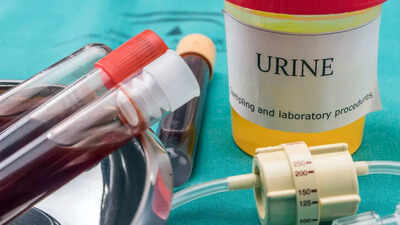
A urine test is one of the simplest yet most informative diagnostic tools in modern medicine. Despite its non-invasive nature, this test can provide essential insights into your overall health—from detecting infections like urinary tract infections (UTIs) to flagging early signs of chronic diseases such as diabetes or kidney problems. Urine testing is regularly used during routine checkups, pre-employment screenings, or when specific symptoms suggest deeper issues. However, while powerful, urinalysis has its limitations. Understanding what a urine test can—and cannot—reveal helps patients set realistic expectations and know when additional diagnostic steps may be necessary.As cited in the study published by the National Institute of Health, one urine test can detect varied diseases and problems which can later turn into chronic illness. Early detection of health problems leads to better preventive measures and on-time treatment.
What is a urine test and why it matters
Urine is produced by the kidneys, which filter excess fluids, toxins, and metabolic waste from the blood. Because urine carries traces of these filtered substances, it serves as a reflection of the body’s internal balance.A urinalysis is the clinical examination of urine to assess its appearance, concentration, and content. Doctors order urine tests for different purposes, depending on a patient’s medical history and symptoms:If a patient shows signs of a UTI, the test will specifically look for bacteria and immune cells. During an annual health screening, a more comprehensive urinalysis may be performed to check for underlying chronic conditions.Urine testing remains a cornerstone of preventive and diagnostic medicine. It is particularly useful for:
- Quickly confirming infections
- Screening for early warning signs of chronic conditions
- Monitoring kidney and liver function over time
- Supporting occupational health requirements during medical checkups
By appreciating both its capabilities and limitations, patients can better understand how a simple urine test fits into a broader healthcare strategy. When combined with other diagnostic methods, urinalysis plays a critical role in early detection, preventive care, and timely treatment.
What a urine test can reveal about your health

Urinalysis can detect a wide range of potential health issues, making it a vital first-line diagnostic tool. Conditions that may be flagged include:
- Urinary tract infections (UTIs) – One of the most common uses of urine tests.
- Diabetes or prediabetes – By detecting glucose or ketones in urine.
- Chronic kidney disease – Through protein leakage or abnormal filtration markers.
- Kidney or bladder stones – Suggested by crystals or blood in urine.
- Kidney or bladder cancer – In some cases, blood or abnormal cells may indicate malignancy.
- Bacterial or yeast infections – Identified under microscopic examination.
- Sexually transmitted infections (STIs) – Some STIs affect the urinary tract and can be detected.
- Liver or bile duct problems – Indicated by the presence of bilirubin.
While these findings can raise red flags, urinalysis alone does not confirm a diagnosis—it simply helps guide further testing.
What a urine test cannot reveal
Despite its value, urinalysis is not a one-size-fits-all solution. Its limitations include:
- No definite diagnosis: Many chronic diseases require blood tests or imaging for confirmation.
- Missed early stages: Some illnesses do not alter urine chemistry in the beginning.
- Diluted samples: Excess fluid intake before the test can affect accuracy.
- Normal results don’t mean perfect health: Persistent symptoms should still be investigated further.
Doctors often recommend follow-up tests—such as blood work, ultrasound, or CT scans—if results are inconclusive or if symptoms continue.
How is a urine test conducted
A complete urinalysis typically involves three stages—each providing different levels of information about the body’s health.Visual assessmentThe first step is simply observing the urine sample:
- Normal urine: Clear and pale yellow.
- Abnormal signs: Cloudiness, foam, or dark coloration may point to infections, dehydration, or liver problems.
- Odor changes: Strong or unusual smells can indicate infection or dietary influences.
Dipstick testA dipstick, coated with chemical pads, is dipped into the urine. These pads change color in response to certain substances, providing a quick diagnostic overview. It can detect:
- pH balance (acidic or alkaline levels)
- Protein (possible kidney damage)
- Glucose or ketones (linked to diabetes)
- Bilirubin or blood (possible liver or urinary tract issues)
- Nitrites and leukocytes (common with UTIs)
- Pregnancy hormones or drug markers in specific cases
Unlike older methods, modern dipsticks not only detect the presence of these substances but also measure their approximate levels.Microscopic examinationIn this step, a concentrated urine sample is viewed under a microscope to identify:
- Red or white blood cells → infection, kidney disease, or internal bleeding
- Bacteria or yeast → infections
- Crystals → possible kidney stones
- This microscopic level of analysis often provides the strongest clues about potential medical conditions.






